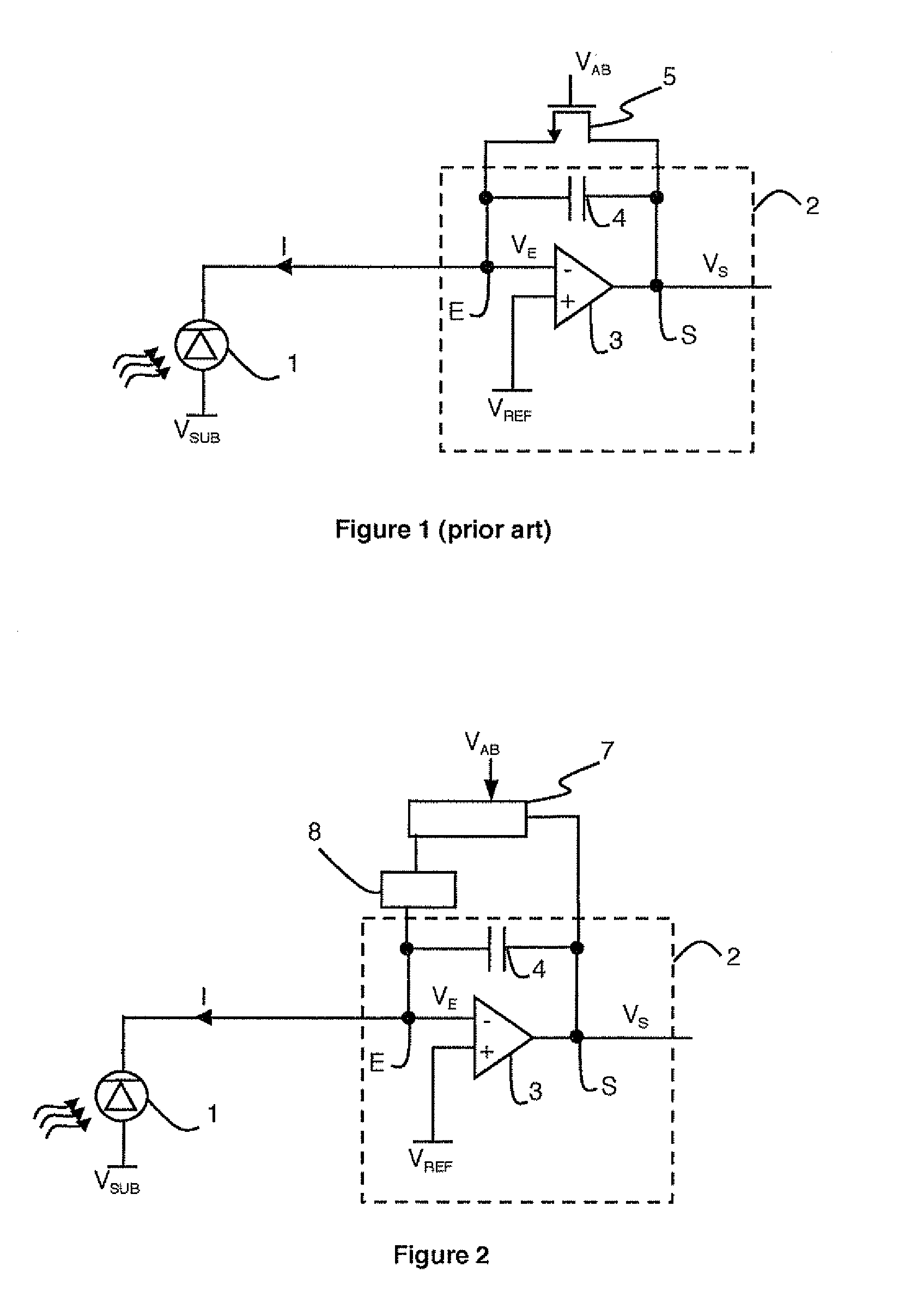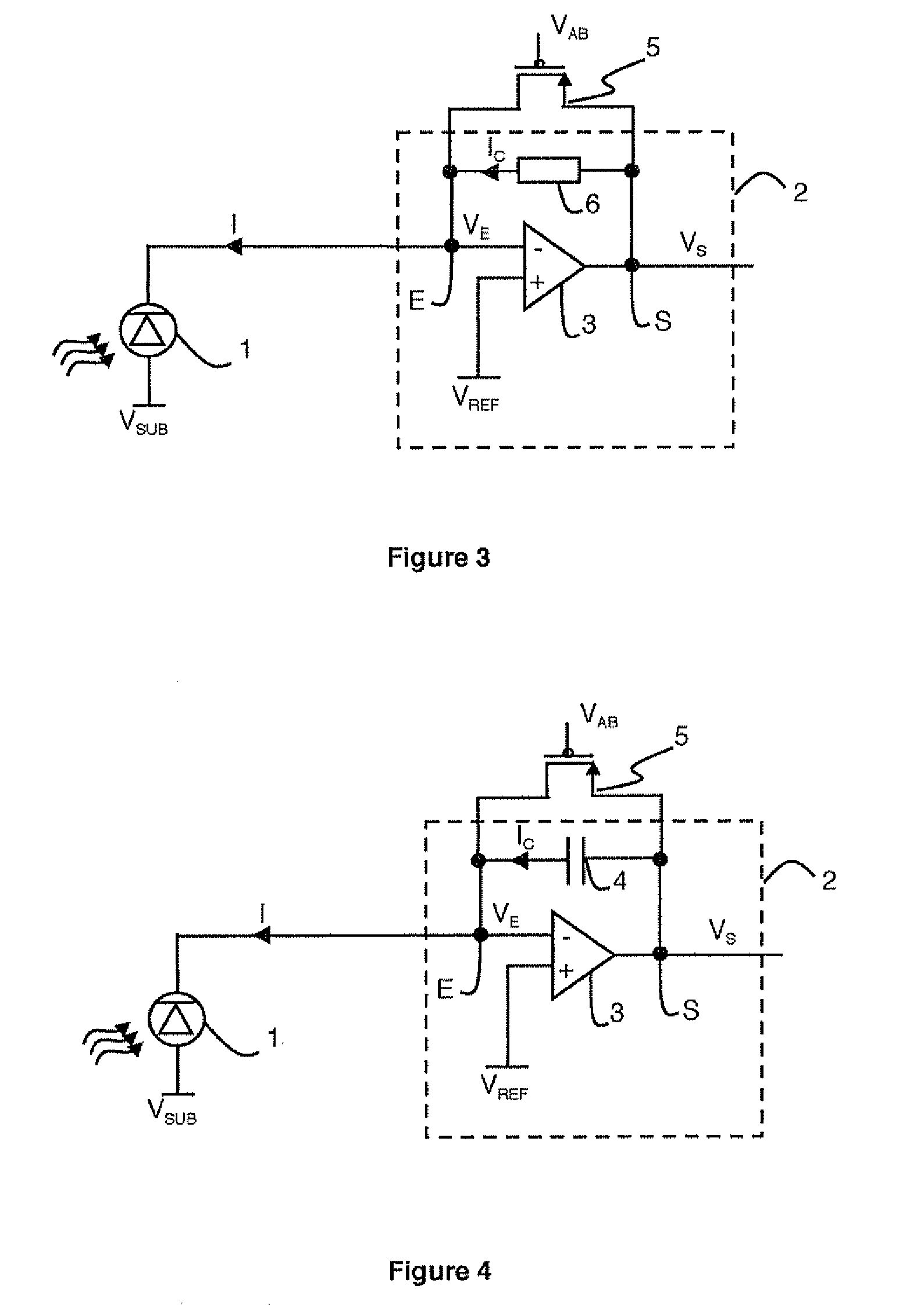Detection circuit with improved Anti-blooming circuit
a technology of anti-blooming circuit and detection circuit, which is applied in the direction of tv system, dielectric amplifier, instruments, etc., can solve problems such as unusability of circuits, and achieve the effect of reliable and repeatable fabrication and easy implementation
- Summary
- Abstract
- Description
- Claims
- Application Information
AI Technical Summary
Benefits of technology
Problems solved by technology
Method used
Image
Examples
Embodiment Construction
[0024]In the circuit according to the prior art illustrated in FIG. 1, nMOS transistor 5 connected in parallel to the terminals of capacitor 4 has to prevent a blooming phenomenon from occurring on the adjacent photodiodes. Transistor 5 therefore has to prevent photodiode 1 from changing bias, but it must not however prevent capacitor 4 from storing a minimum of charges necessary for the foremost purpose of the detection circuit which is to define the lighting of the observed scene. It is apparent from these two conditions that the anti-blooming voltage VAB applied to the gate electrode of nMOS transistor 5 has to be comprised within a precise range.
[0025]According to the first condition, anti-blooming voltage VAB applied to the gate electrode of nMOS transistor 5 has to be lower than the reference voltage VREF applied to the second input of amplifier 3 to which the threshold voltage Vth of transistor 5 is added. In this way, nMOS transistor 5 is not permanently conducting, as volta...
PUM
 Login to View More
Login to View More Abstract
Description
Claims
Application Information
 Login to View More
Login to View More - R&D
- Intellectual Property
- Life Sciences
- Materials
- Tech Scout
- Unparalleled Data Quality
- Higher Quality Content
- 60% Fewer Hallucinations
Browse by: Latest US Patents, China's latest patents, Technical Efficacy Thesaurus, Application Domain, Technology Topic, Popular Technical Reports.
© 2025 PatSnap. All rights reserved.Legal|Privacy policy|Modern Slavery Act Transparency Statement|Sitemap|About US| Contact US: help@patsnap.com



